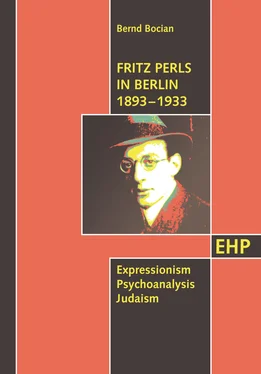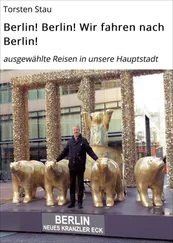I would like to express my thanks to Erhard and Anke Doubrawa and to Hammer Verlag for the opportunity to make this monograph accessible to an interested public. Further, I would like to thank Hartmut Frech and Regine Reichwein for giving me the opportunity to submit an initial version of this study as a doctoral dissertation at the Technical University of Berlin. The present edition has been substantially expanded and revised, and I have added footnotes containing important information and explanations.
I would like to express special thanks to the individuals listed below who provided concrete assistance during my years of investigation and research, among them in particular the many psychoanalytic colleagues who supported me with unexpected openness and generosity as if it were a matter of course.
And finally, my thanks to my Italian wife Gabriella and my little daughter Mirta who in part grew up along with this book.
Bernd Bocian
Genoa, September 2006
Following are those who helped me to find and obtain biographical material and documents pertaining to the history of the times:
Mitchell G. Ash, Berlin/Vienna
Andreas Bocian, Münster
Gerhard Brändle, Pforzheim
Ms. Bruckmann, Berlin
Dieter Essig, Pforzheim
Ernst Federn, Vienna
Hildegard Feidel-Mertz, Frankfurt
Volker Friedrich, Hamburg
Rainer Funk, Tübingen
Birgit Gregor-Jerke, Berlin
Sabine Hank, Berlin
Ludger M. Herrmanns, Berlin
Michael Hubensdorf, Berlin/Toronto
Alfred Hübner, Pforzheim
Dagmar Kicherer, Freiburg
Helga Krohn, Frankfurt
Michael Laier, Frankfurt
Hans-Friedrich Lockemann, Berlin
Regine Lockot, Berlin
Kurt Mühlberger, Vienna
Thomas Müller, Berlin
Bernd Nitzschke, Düsseldorf
Johannes Reichmayr, Vienna
Hans J. Rothe, Frankfurt
Channa Schütz, Berlin
Milan Sreckovic, Nice
Anna Sreckovic, Nice
Albrecht Goetz von Olenhusen, Freiburg
THE WORK OF REMEMBERING AND TOPICALITY
Our history is the background of
our existence, it is not an accumulation
of facts but the record of how we become
what we are. (Fritz Perls 1973, 76) 1
The only remembering that is fertile
is that which simultaneously reminds us
of what remains to be done. (Ernst Bloch 1985, 516)
Fritz Perls, generally considered the founder of Gestalt therapy, achieved fame as a kind of counter-cultural guru on the American West Coast in the late sixties of the last century. Transcending the conventions of established psychotherapy during his times, and definitely those of Freudian psychoanalysis, he undertook daring existential encounters with his group clientele. His direct style of communication brought about healing, caused harm, and most certainly expanded the spectrum of therapeutic intervention. Hardly anyone viewed his appearance as a figure against the background of a life that had already spanned more than 70 years. The person who does will discover that many a formulation with a seemingly superficial ring and many a hardly explained theoretical or practical approach drew upon a life that was steeped in the experience of survival and had assimilated copious amounts of theory.
Behind the »dirty old man,« as Perls often referred to himself, whose external appearance during the last years of his life presented a mixture of Rabbi, Santa Claus, and Rasputin, with a bushy full beard and bib overalls, and whose funeral in San Francisco in 1971 would have done great credit to a hippie king, behind this lies the life of Friedrich Salomon Perls who was born into a Jewish family in Berlin in 1893.
Perls trained as a neurologist at major medical institutions and as a Freudian psychoanalyst in Berlin and Vienna, the most important international centers of the discipline in his day. He worked as a training analyst for several years with the official recognition of the International Psychoanalytic Association (IPA) and must be considered an experienced clinician. Behind the popular image of the eccentric from the American West Coast, there is a man who stood as a lifelong representative of the so-called Expressionist generation. He »grew up« on the bohemian scene in Berlin, participated in Expressionism and Dadaism, and experienced the turning of the artistic avantgarde toward the revolutionary left. Deployment to the front line, the trauma of war, anti-Semitism, intimidation, escape, and the Holocaust are further key sources of biographical influence. The »detailed study of a life that was slashed by two world wars and emigration, and a mind that was moved by all of the streams typical for the era,« 2instilled me with a substantial degree of respect for the old man’s life experience and the approach that he inspired.
For me, central positions, theories, and methods of Gestalt therapy are part of the tradition of the European-oriented cultural avant-garde in Berlin 3during the years of the Weimar Republic. They were later driven out by the Nazis, and what fled Germany in 1933 along with Fritz 4Perls were essentially the experiences of the so-called Expressionist generation. Moreover, the history of the development of the Gestalt approach as a therapeutic method is part of psychoanalytic history in the German cultural region, in particular the history of Freudian psychoanalysis in exile. For historians of psychoanalysis, Perls does not exist as a candidate at the Berlin Institute, nor is the fact recognized that for some time he held an official position as an IPA training analyst in South Africa. The present book fills a gap in the pre-Nazi history of psychoanalysis in that respect. It is my intention to examine the first years of Perls’s emigration in a further monograph and also in that context to research the reasons for the withdrawal of his accreditation as a training analyst.
Elsewhere, I have analyzed in detail the course of Gestalt therapy’s evolution from the revision of Freud’s theory, methods, and critique of culture (see Bocian 2000). The revision of orthodox positions that was begun by Fritz and Lore Perls as a psychoanalytic couple, and carried forward together with Paul Goodman, looks back on a line of ancestors composed overwhelmingly of dissidents from the Freudian school. 5One of the main objectives Perls and Goodman pursued in their foundational work, »Gestalt Therapy,« was to understand and integrate as complementary polarities 6diverse innovations within psychoanalysis. The innovations concentrated on certain areas of human reality which they considered valuable but had been driven into dissidence by the orthodox mainstream at the time (see Perls et al. 1996, 236f., Stoehr 1994, 300f.).
Since psychoanalysis, as Perls once remarked, is a »research project« (Perls 1977, 142) and, »as a science of the human being cannot be monopolized« (Cremerius 1992, 34), Gestalt therapy for me remains a figure against the ground of psychoanalytic history, theory formation, and practice. It is characterized in particular by the preservation and continuance of radical elements in Freudian psychoanalysis, by which I am referring to its relational, contextual, and socially critical aspects (see Bocian 2000, 98 f., Lichtenberg 2005, Lothane 1997).
Accordingly, in the context of the present monograph I will also point out the origins of the culturally critical line of tradition within psychoanalysis which made its influence felt in the Expressionist milieu through Otto Gross. In my opinion, Gestalt therapy is also part of this tradition.
With reference to the fact that Perls was an emigrant, I share the opinion expressed by Uwe Peters in his book »Psychiatrie im Exil« (Psychiatry in Exile), namely, that the emigrants are little remembered. In keeping with Peters, the present book also makes an effort to »do a small part of the necessary mourning work, to contribute a tiny piece toward a saveur diachronique and thereby to counteract somewhat the emigrants’ lamented, traceless disappearance from German history« (Peters 1992, 397).
Читать дальше











